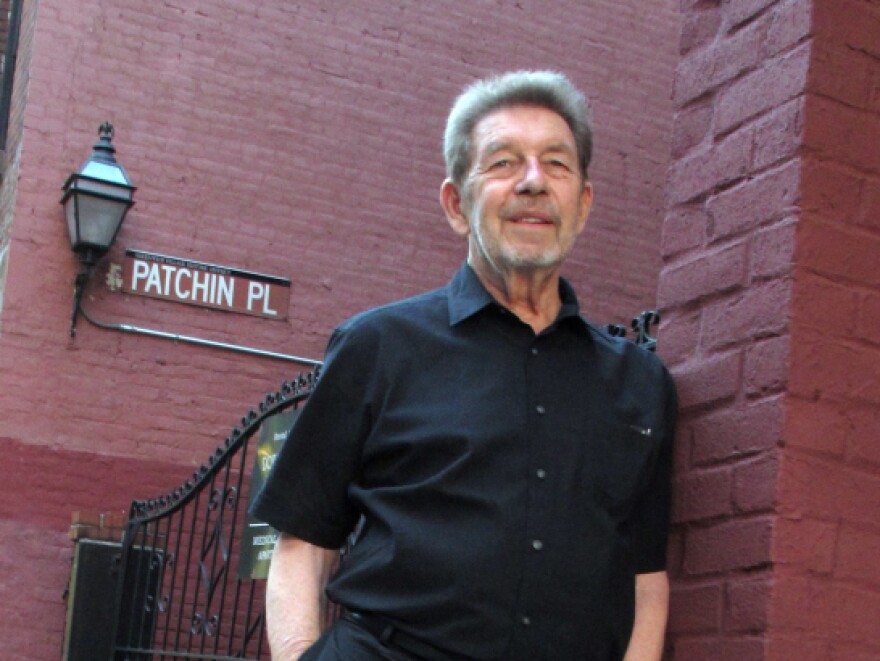Veteran journalist and writer Pete Hamill fondly remembers the nearly 40 years he spent working in the newsrooms at the New York Post and the New York Daily News.
"[At the Post,] We had Murray Kempton [on staff,] who wrote like an 18th century restoration dramatist. We had Nora Ephron, who was a brilliant writer when she was a kid, walking into the city room. We had William F. Buckley in the paper," he tells Fresh Air's Dave Davies. "These were not people who thought the audience was stupid. They thought the audience was smart and they wrote up to the audience instead of down. I think that's the kind of paper that's rapidly fading."
Hamill's latest novel, Tabloid City, is a thriller that partially takes place in an old-school tabloid newsroom, where a gruff editor-in-chief named Sam Briscoe is struggling to keep his print paper afloat amidst rapid digital changes. Hamill says going digital has changed the makeup of newsrooms, which used to be noisy, smoke-filled dens filled with reporters and editors typing away under deadline.
"More often than not, the city room now resembles an insurance company," Hamill says. "It's not that old-raucous, bawdy, yelling-over-somebody — the obscenities, the casual bad language, the urgency of people's speech. The new technology is not noisy. You don't hear the printing guys one floor down banging away on lead type on the stone. But I think the passion is still there — I think people work on newspapers not to get rich, God knows, but because they believe in the craft."
But Hamill still thinks the edgy bloggers of today differ tremendously from the columnists of the 1960s and 1970s.
"I was a columnist in a period of [Jimmy] Breslin and Mike Royko and others, and we came from a tradition where we were paid to have opinions, but the opinions were based on the reporting. We had been there, whether it was Vietnam, or Northern Ireland, or the wrong part of town." he says. "Now, to me, there's too many columns that are just based on reading The Washington Post that morning — and not going anywhere — and they have a different texture. Doesn't mean they're not good, but they have a different sense, a different feel to them."

Hamill received his first professional journalism job in 1960, after writing letters to an editor at the New York Post. Five years later, the scrappy young reporter became a columnist, where he covered sports, movies, the war in Vietnam and the daily ups and downs of ordinary life. He also started writing fiction. His first novel, A Killing for Christ, was published in 1968 and he has since published several more novels and short story collections. It was his journalism career, he says, that helped propel his fiction career forward.
"As a reporter, going around, you hear stories you can't prove, which means you can't put them in the newspaper," he says. "But they're good stories and I would jot them down thinking maybe one day I could write that as a short story. I got the bug to really write novels ... in the 60s, when there was so much turmoil — so many things going on and such a great sense of change in the air — that I could record for a newspaper column, but I knew there was something else going on, something deeper, and I needed a way to write about that."
Hamill says two things have helped him become a better fiction writer — frequent naps, which give him both energy and ideas — and putting away his typewriter in order to write out his stories by hand.
"At the beginning of writing fiction, too much of the newspaper style was getting into the prose so I thought, 'Gee, I should try writing longhand. Maybe I can tap something that goes back to the point before I could type,'" he says. "I'll write five or six pages in longhand on a yellow pad and then take it to the computer and type it out, which gives me a second draft right away. And if there's momentum from then, it gives me another four or five pages and off I go."
Pete Hamill received the Ernie Pyle Lifetime Achievement Award from the National Society of Newspaper Columnists in 2005. He is currently a Writer in Residence at New York University.
Copyright 2023 Fresh Air. To see more, visit Fresh Air.


